Internet Concepts - HTTP/HTTPS, DNS, DOMAIN, and SERVER
Understand the fundamentals of the internet: HTTP, HTTPS, DNS, domain, and server. An essential guide for anyone starting in web development.
06-14-2023
Introduction
Understanding internet concepts is crucial in a programmer’s daily routine—believe me! Grasping these terms can save you countless hours when solving problems at work or dealing with production issues. It helps you identify issues faster and troubleshoot with confidence.
Let’s explore the most basic and essential concepts of the internet.
How HTTP Works
HTTP (Hypertext Transfer Protocol) is the communication protocol used on the World Wide Web, i.e., it’s what allows communication between client and server.
Here's a simple diagram of an HTTP communication:
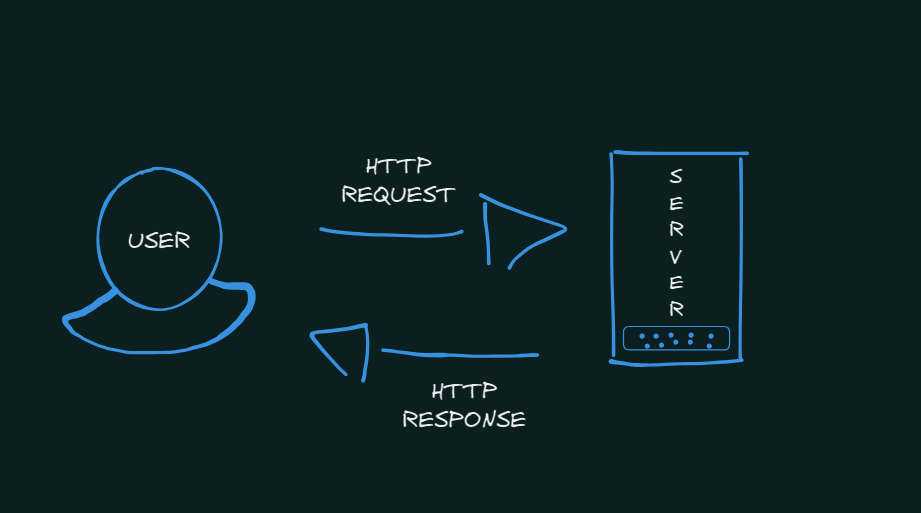
Notice that the user sends a request for certain data to the server — this is
called an HTTP REQUEST. The server receives the request and returns a response
— called an HTTP RESPONSE.
HTTP Methods
GET
The GET method requests a resource from the server, and the expected outcome
is the return of the requested data.
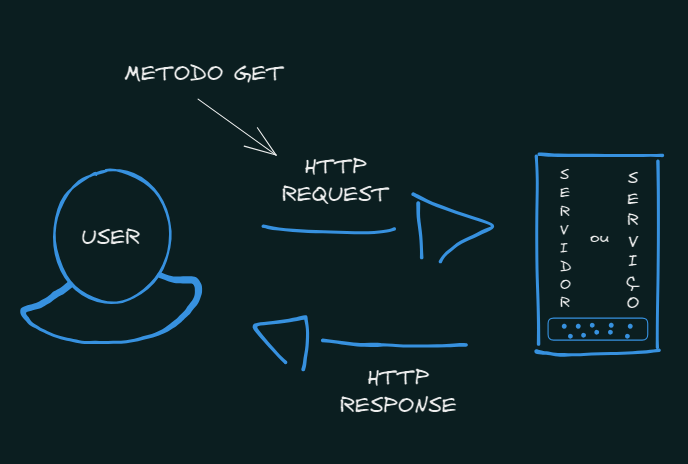
We can describe the HTTP REQUEST here as a GET method asking the server for
some data.
HEAD
The HEAD method is similar to GET, except the response has no body — just
the headers.
POST
The POST method sends data to the server, which then receives and stores the
data.
PUT
The PUT method updates or replaces data on the server. You must send all the
necessary data to update the resource. If the resource (e.g., a user with
ID 1234) doesn't exist, PUT will create it; if it exists, it will update it.
DELETE
The DELETE method is used to remove a specific resource.
CONNECT
CONNECT is rarely used and is mainly for establishing a tunnel to a server
through a proxy — typically used in secure, proxy-based environments.
OPTIONS
The OPTIONS method returns information about the server's communication
options. It's commonly used in application deployment platforms to retrieve
configuration details.
PATCH
The PATCH method is similar to PUT, but it allows partial updates to a
resource (e.g., updating just the user's name). Unlike PUT, PATCH cannot
create a new resource.
TRACE
The TRACE method is like a debug tool — it echoes the received request to test
what’s received on the server and verify the request path.
Real Example
Let’s use a real-world example to understand GET.
When you open YouTube and search for a video, the site suggests results in real time. If you inspect the browser’s Network tab, you can watch these HTTP requests happen.
Check out the screenshots:
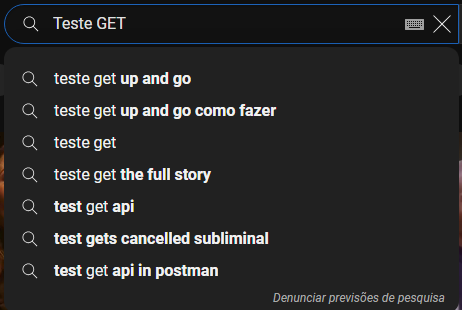
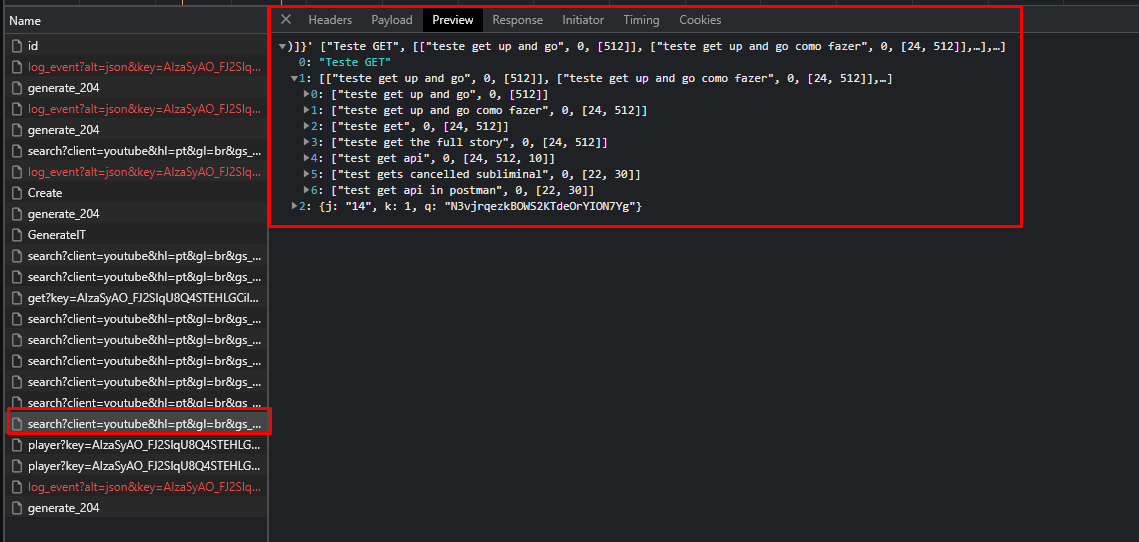

By clicking on the request in the Network tab and viewing the Preview,
you’ll see the server’s response — in this case, the video suggestions. The
response returned with a status code 200, meaning success.
HTTPS
HTTPS stands for Hypertext Transfer Protocol Secure. It’s similar to HTTP, but with an added “S” for Security.
HTTPS adds an encryption layer using TLS/SSL, making all data transfers secure. Any data on a site using HTTPS is encrypted and unreadable to third parties unless they have the correct key. Most browsers show a “secure” indicator for sites with HTTPS.
To use HTTPS on your site, you need an SSL certificate. Most hosting platforms offer plans that include SSL — how you obtain it is up to you.
How DNS Works
DNS stands for Domain Name System, and it’s like the internet’s phonebook. It stores website addresses and translates IP addresses into human-readable names.
When you host something on the web, it’s assigned an IP address (e.g.,
192.46.254.15). Memorizing these numbers is impractical, so DNS maps that IP
to a readable name like www.example.com.
Here’s how it works:
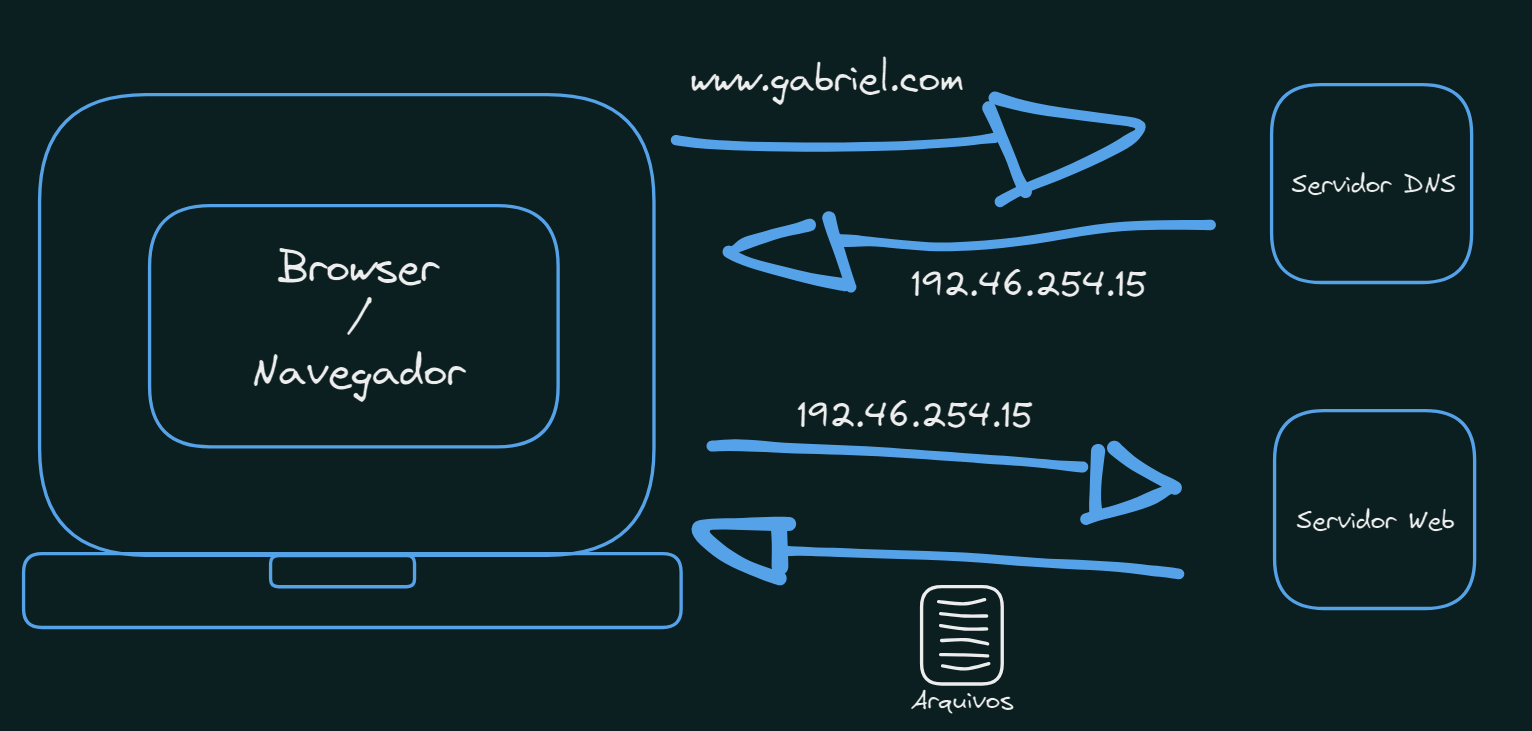
When the browser requests www.gabriel.com, the DNS returns the corresponding
IP so the browser can fetch the requested page’s files from the web server.
The organization that maintains IP address records is ICANN (Internet Corporation for Assigned Names and Numbers), a nonprofit backed by global committees.
How Domains Work
As mentioned, every website is hosted at an IP address. DNS helps us convert that into a domain name.
For example, in http://www.mycoolsite.com, everything after www. is the
domain name: mycoolsite.com.
The domain is your site’s unique address — what users type to access it, without needing to know the IP.
To host a site, you must register the domain with a provider who coordinates with ICANN (for international domains) or with RegistroBR (for Brazil). Domains must be unique worldwide.
National vs. International Domains
When registering a domain, you can choose between national or international options.
National Domains
In Brazil, domains are handled by RegistroBR. Common domains include
.com.br, but there are also specific ones like .gov.br or .blog.br.
See more domain categories
International Domains
These include .com, .org, .net, and others. They’re managed by ICANN and
can be used by anyone worldwide, including Brazilian sites.
How Servers Work
What Is a Server?
A server is essentially a powerful computer — often more powerful than typical desktops — equipped with advanced CPUs, memory, cooling systems, and other hardware.
Servers offer centralized services, meaning you only need to set up software once on the server, and all connected devices can access it.
Examples of server services:
- Web hosting
- Databases
- Email services
- File storage
- VoIP systems
- Payment systems
How Does It Work?
Each server type works differently, but let’s focus on web servers.
When you search for a website in your browser:
- The DNS translates the domain into an IP.
- The HTTP/HTTPS protocol sends a request to the web server.
- The server responds with the site’s content.
If successful, you’ll see the webpage. The way servers store and deliver files can vary widely.
Conclusion
By the end of this article, you should have a solid understanding of how HTTP, HTTPS, DNS, domains, and servers work. Play around in your browser’s Network tab to explore these processes in action.
If you want to go deeper, check out topics like status codes, server types, server hardware, and practice with HTTP methods.
If you have any questions or suggestions, feel free to reach out. Thanks, and God bless!